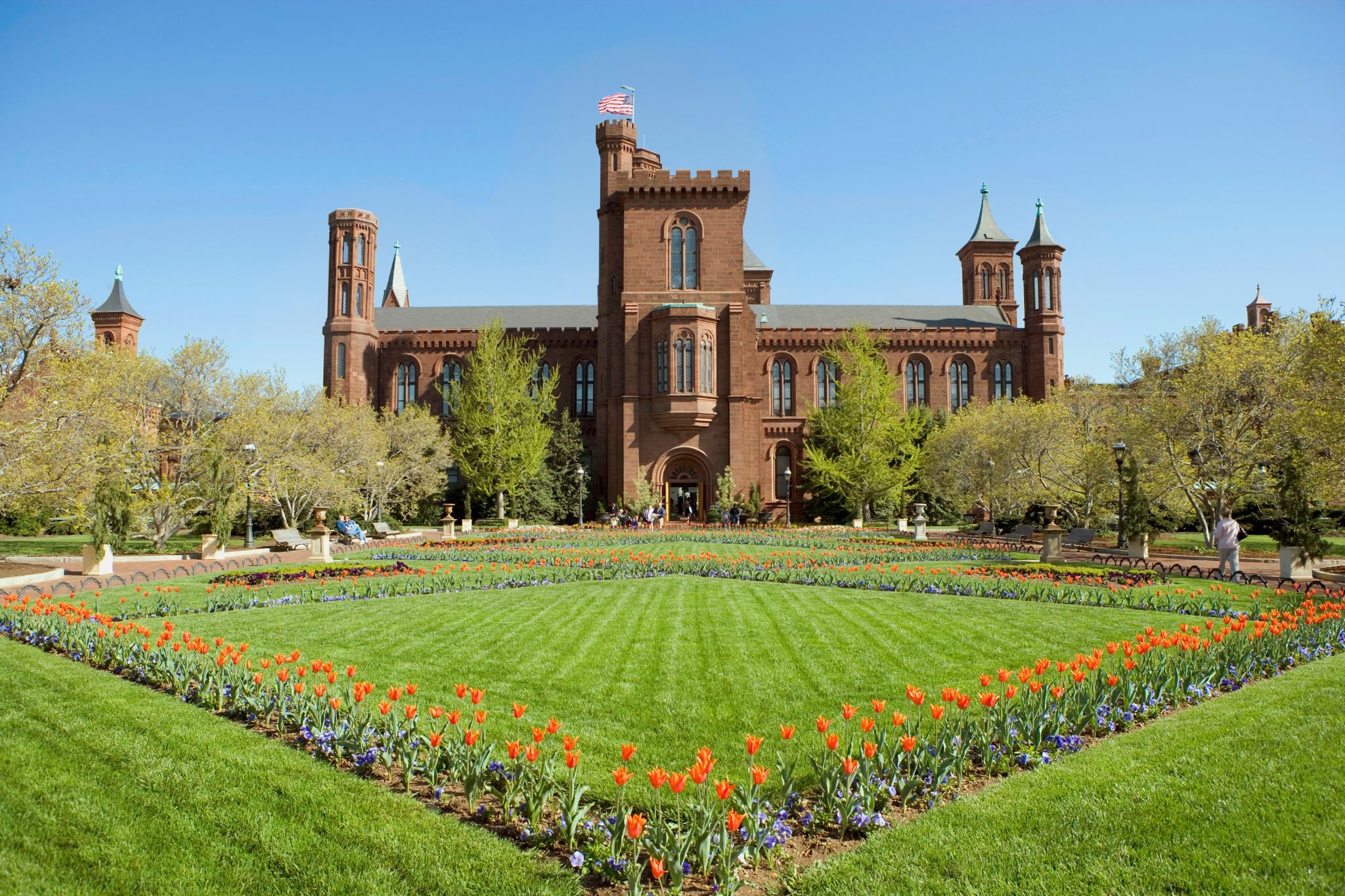Everybody thinks spring is the time to work on lawns. In fact, fall is the primo time to give your lawn some TLC. That's the overarching message in lawn maintenance tips from Jeff Schneider, the horticulturist in charge of maintaining the gorgeous Smithsonian Gardens in Washington, D.C. So gorgeous, in fact, they're actually considered "outdoor museums."
So he knows what he's talking about. And he can't emphasize enough that we've been fooled into thinking that spring is when we need to be feeding and nurturing our lawns.
“Fall is the biggest missed opportunity," Schneider says. “All the money you spend on your lawn, you should spend in the fall."
His advice on what lawn maintenance tips to do in the fall? These seven things:
#1 Resuscitate Your Grass by Aerating It
Running barefoot across the cool grass in summer might feel amazing to you — but not to your lawn.
From your lawn's perspective, “it's like someone sitting on your chest," Schneider says, because the pressure of running and walking on your lawn causes it to compact. "It's hard to breathe."
The solution is to aerate.
Aerating your lawn punches holes in the turf. You've probably seen those weird-looking dirt plugs sitting on grass, which relieve compaction and give new seeds a safe place to germinate.
You can rent an aeration machine, which is kind of like pushing a mower, and do the job yourself for $40 to $80. But if you've got better things to do, you can pay a lawn service to do it for you for about $174 to $570 per 5,000 square feet.
Fall is the biggest missed opportunity. All the money you spend on your lawn, you should spend in the fall.
Jeff Schneider
Horticulturist, Smithsonian Gardens, Washington, D.C.
#2 Fertilize and Reseed
Lawns love fall's coolish weather for stretching out their roots. Help yours do so by filling in its bare spots and spreading around some fertilizer.
“The turf will continue to grow roots through much of December and develop a deep root system before you go into the hard winter months," Schneider says.
The best part? Come spring, your lawn will be lush and lovely from the get-go. You probably won't have to do a thing, except start mowing.
BTW: Home-grown fertilizer from your compost pile is a great, almost-free way to fertilize. Spread it lightly over your lawn, so that it can soak into the turf and feed it throughout winter.
#3 Plant a Tree — or Three
in your yard is a great way to boost the value of your home.
Again, fall's the time to put in the work. The cool nights and warm days in autumn give newly planted trees enough time to send out roots to become established before winter.
If you plant in the spring, you risk heat waves that can seriously stress out your trees before they have the chance to set roots. The exception is broad-leaf evergreens — like hollies — which are vulnerable to winter winds.
Related: The Worst Trees to Plant in Your Yard
#4 Stop Raking Leaves
NEVER RAKE LEAVES AGAIN. Yes, we did just say that.
Instead of raking and bagging leaves, just mow and shred 'em. They'll decompose over winter and feed the lawn.
“If they're not too thick, I run them over with the mower and leave them in place," says Schneider. How thick is too thick? "If you still can't see at least 50% of your turf after you chop them up, rake up the rest." (OK, so we meant almost never.)
If you do need to rake, run them through a shredder and add to your compost pile. Or just leave them in a corner of the yard and let them decompose over winter into leaf mold, which is a great spring meal for your garden.
#5 Give Tree Branches an Exam
In fall, when your leaves are all gold and crimson, it's easy to spot sick or dead branches — they're the ones with no leaves.
Dead limbs stress trees and can fall on your head (ouch!) or your roof ($!) in a stiff wind.
Mark those branches with ribbons or spray paint so that when all the branches are undressed in winter, you'll know which ones to hack off to promote regrowth in spring.
BTW: To keep branches in their best shape, spread a half-inch layer of compost around the trunk extending to the canopy line — “the farther the better," Schneider says. That feeds the tree during winter and helps it leaf out in spring.
#6 Plant Some Stunners
Just because your trees are barren in fall doesn't mean your yard has to look like crap, which wrecks curb appeal.
After the last heat spell of summer, plant cold-weather annuals — pansies, mums, and violas — in the front along the foundation to provide some color and interest throughout fall (and even in winter, if it doesn't get too cold).
Some will even rebloom in spring, meaning less work for you.
#7 Set Your #gardengoals
Fall is a great time to scroll through all the shots of your yard on your Instagram feed and think about what needs work.
Where are the bald spots?
Which plants look great together?
Which plants should be separated at rebirth next spring?
While the successes and failures are fresh in your mind, jot down a to-do list for when the weather warms up. Then look forward to an easier spring than last year because you've done most of the prep now. Sweet.
Related: Year-Round Lawn Care Guide
